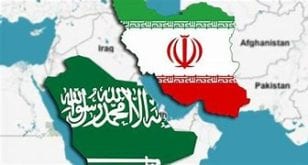Radiofarda – Tehran City Council Chairman Mohsen Hashemi says the number of those infected with the new coronavirus in Iran is “much higher” than the official figures released by the government.
He also called on the authorities to release the outbreak figures in Tehran separately, something the government has refused to do in the case of the two outbreak hotspots; the capital and the religious city of Qom.
Speaking at the Tehran City Council meeting on Sunday April 19, Hashemi cited “experts” and an estimate by the Iranian parliament’s research center as his sources, adding that the Health Ministry generally agrees with his view on the extent of the epidemic.
Hashemi also summed up what many critics have previously said. “A delay in announcing the start of the outbreak in Iran, not taking into account the number of those who died before the announcement, lack of adequate test equipment, and presenting COVID-19 deaths as respiratory problems cases are among the reasons why the figures announced by the Health Ministry are much lower than actual numbers.”
Meanwhile, stressing that the “actual numbers are several times higher than what is being announced by the government,” Hashemi warned that the haste in lifting lockdown restrictions can lead to a new wave of infections.
He was referring to President Hassan Rouhani’s initiatives to restart small businesses after just a few weeks of closure.
Last week, the Majles Research Center said in a report that the actual COVID-19 death toll is twice as much as the official figures and the number of infection cases is up to eight times higher. The latest Health Ministry Report put the death toll at over 5,100 and the number of infection cases at more than 82,000 on Sunday.SEE ALSO:Iran’s Health Minister Defends ‘Scientific Management’ Of Coronavirus
Despite the warnings, President Hassan Rouhani said at Sunday’s meeting of the national task force to fight COVID-19 that he has brought forward the date for the reopening of religious sites and shrines by two weeks at the request of Alireza E’rafi the Dean of the Qom Seminary, who was also present at the task force meeting.
E’rafi is an influential figure appointed by Supreme Leader Ali Khamenei to oversee the religious schools in Qom where the outbreak is said to have started as early as in January.
Rouhani said that that religious sites which were meant to be re-opened by May 20, could be re-opened by late April or early May, although he added that in the meantime, the case will be reviewed.
Thousands of people visit to religious sites and shrines in Qom, Mashhad, Shiraz and elsewhere and clerical circles and businesses in those cities benefit from pilgrims.
Rouhani did not explain whether he has also sought the views of medical experts and local authorities on the early re-opening of those busy sites where frequent visits and large gatherings in small spaces make a further spread of the disease highly likely.
In mid-February, Khamenei’s representative to Qom and the head of the IRGC intelligence had strongly opposed the closure of the shrine in Qom, but after a week of disputes, finally the government managed to shut the shrine to curb the spread of the virus.
Meanwhile, as the fasting month of Ramadan is approaching by or before April 25 (based on the sighting of the moon), Rouhani said that there will be no gatherings at homes and restaurants in the evenings of that month when traditionally religious people and government officials hold banquets.
Nevertheless, Rouhani who has already reopened what he called low-risk businesses, has ordered the imminent reopening of medium-risk businesses. As the only exception, he named restaurants as an example of high-risk businesses that should remain closed for the time being.
During the past week, people and officials have warned Rouhani that busy traffic and people working next to each other could increase the potential for a new wave of infections but the president seemed adamant to leave the partial lockdown behind without considering the risks.
He promised that people will be able to travel to other cities by Eid al-Fitr that marks the end of Ramadan, around May 23.
Last week, Tehran City Council member Mohammad Javad Haqshenas called on the Tehran Municipality to announce the real figures about COVID-19 deaths and infections “so that if the government does not care about people’s health, people can decide to take care of themselves.”
The Health Ministry does not announce the figures for Tehran, but Alireza Zali who leads the COVID-19 task force in the capital said on Friday said one third of COVID-19 deaths and infections take place in Tehran.
Nahid Khodakarami, another member of the Tehran City Council said on April in an interview with Sharq newspaper April 15 that currently between 70 to 100 people die of coronavirus in Tehran every day. She estimated the number of COVID-19 deaths in the capital alone since March as around 6,000.
 Shabtabnews In this dark night, I have lost my way – Arise from a corner, oh you the star of guidance.
Shabtabnews In this dark night, I have lost my way – Arise from a corner, oh you the star of guidance.


